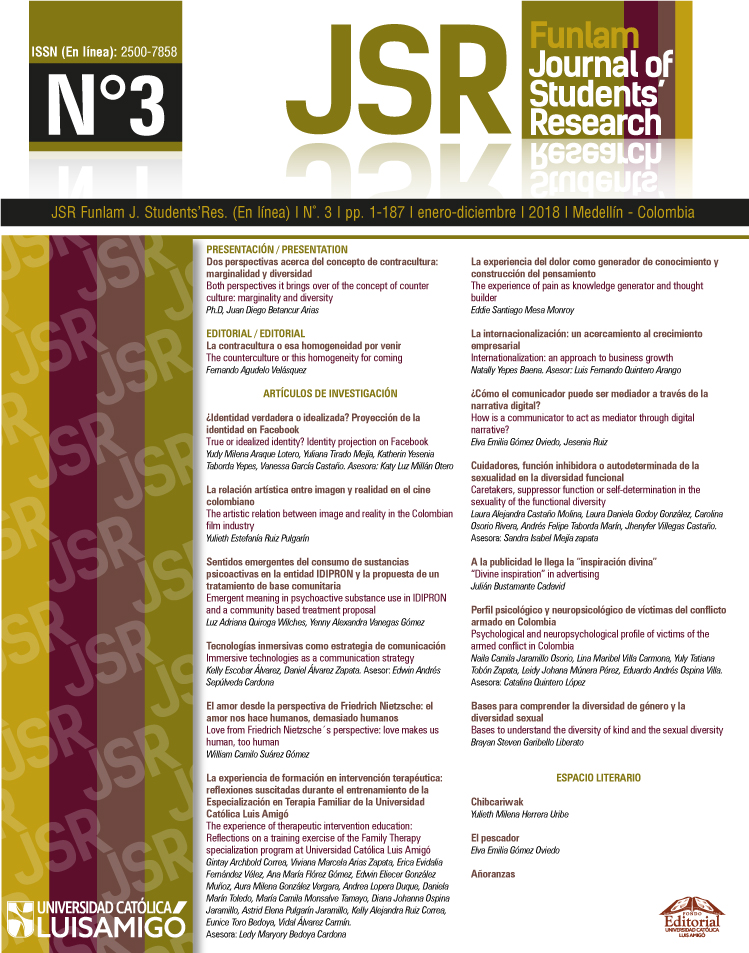The experience of therapeutic intervention education: Reflections on a training exercise of the Family Therapy specialization program at Universidad Católica Luis Amigó
DOI:
https://doi.org/10.21501/25007858.3134Keywords:
pain, experience, knowledge, thinking, suffering.Abstract
This paper comes about as the result of the Insan student research group, which is part of the School of Education and Humanities. This student research group proposes the experience of pain as a state that allows the construction of knowledge, an epistemological relation between reality and thinking. The experience of pain becomes not only a feeling but also an interpretation that is related to reason under Schopenhauer´s perspective, thus establishing a dissimilarity and a path of how pains works and how after feeling it becomes a source of knowledge, opening a possibility for the combination of feelings and creation of knowledge.Downloads
References
Cabos, J. (2014). Sufrimiento e individualidad en Schopenhauer. Anuario Filosófico, 47(3), 589-604. Recuperado dehttps://www.unav.edu/publicaciones/revistas/index.php/anuario-filosofico/article/view/710
Kishimoto, M. (Director y Creador). (2015). Desesperación, ¡Un corazón roto! [Episodio de la serie animada Naruto Shippuden]. Tokio: Studio Pierrot
Pérez Marc, G. (2010). Sujeto y dolor: introducción a una filosofía de la medicina. Arch Argent Pediatr,108(5), 434-437. Recuperado de http://www.scielo.org.ar/pdf/aap/v108n5/v108n5a09.pdf
Schopenhauer, A. (2010). El mundo como voluntad y representación


